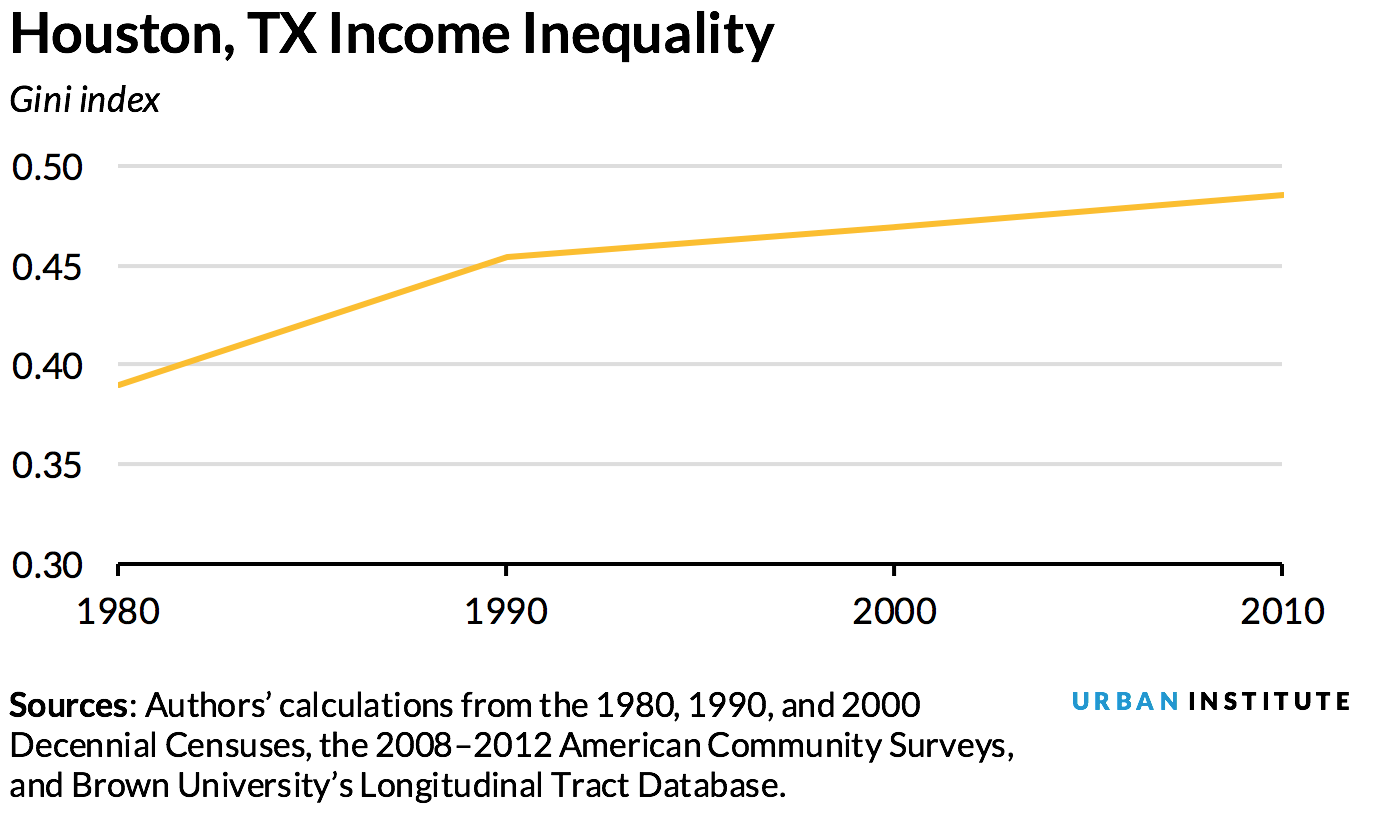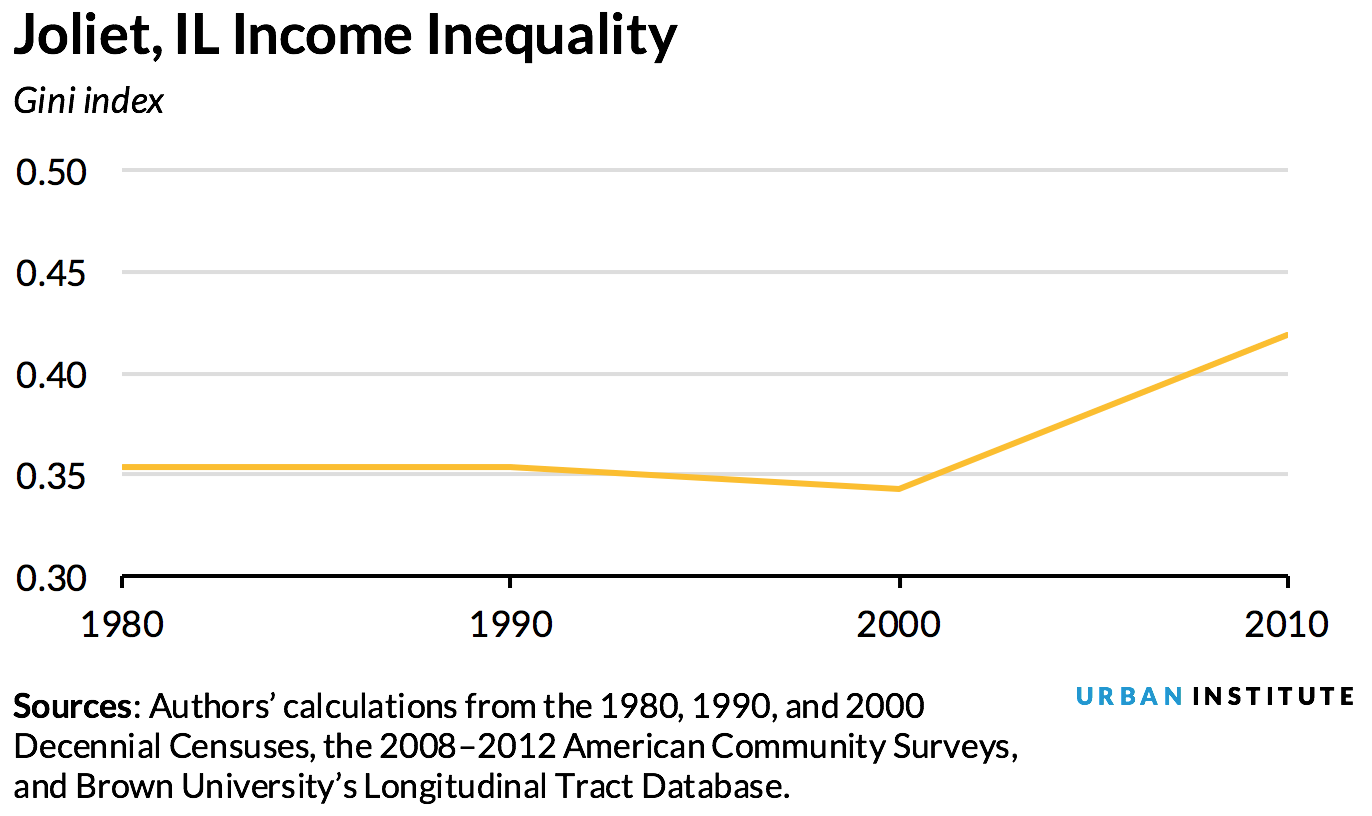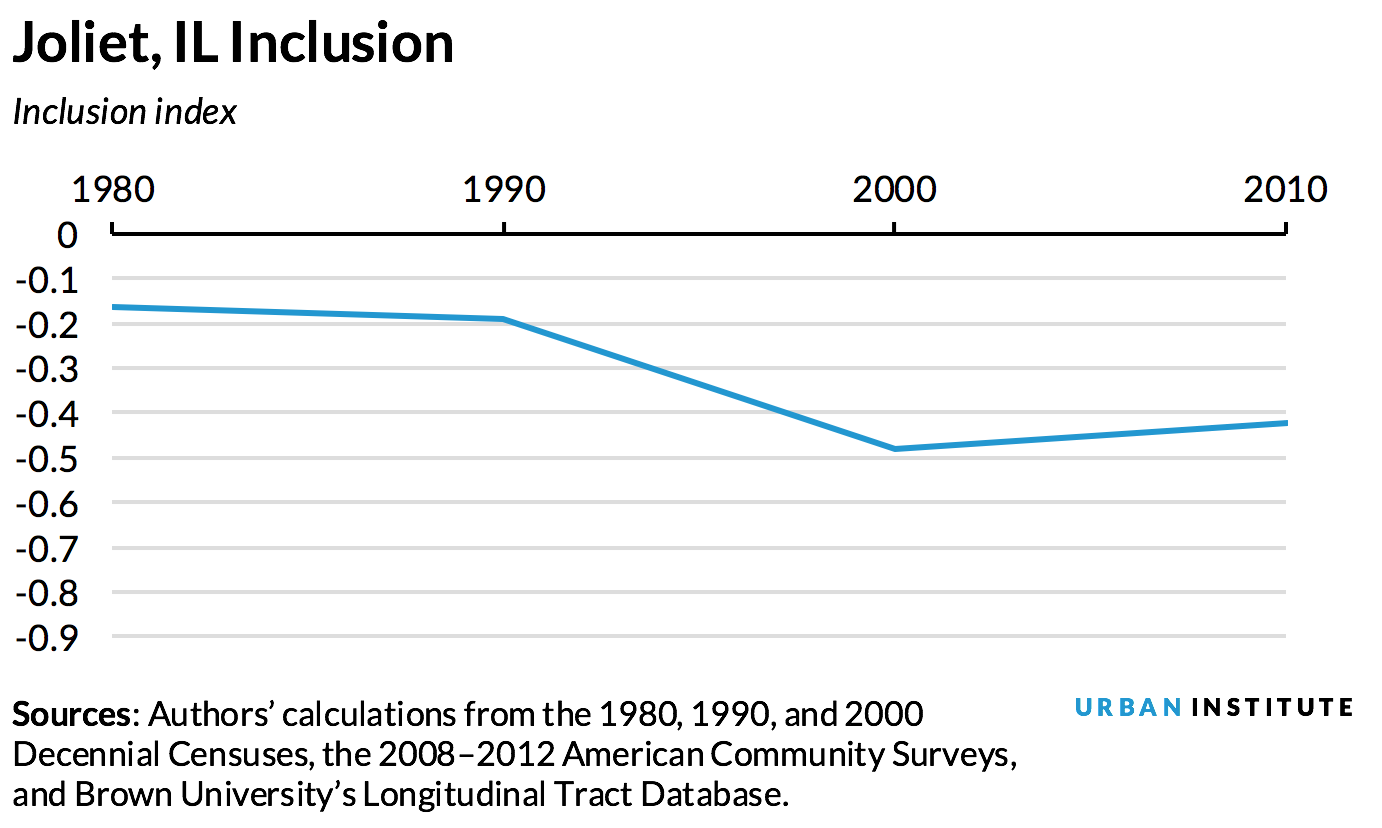
<p>UpperCut Images/Getty</p>
When people think of equity, they often associate it with income equality. Why do CEOs make so much more money than the people who work for them? Why is so much wealth concentrated among so few people?
Income inequality may be a good measure of equity at the national level, where borders are more rigid and migration is difficult, but it is not as useful at the city level. In cities, a low level of income inequality can reflect the exclusion or displacement of low-income residents, or it can reflect an overall lack of opportunity.
In our new paper, we look at 274 US cities from 1980 to 2010 and explore the relationship between income inequality and inclusion—a measure we think better captures equity at the city level. Inclusion refers to the opportunity for all residents—especially those most marginalized—to contribute to and benefit from economic prosperity. We measure inclusion by creating indices that consist of poverty, spatial segregation, housing affordability and homeownership, and educational attainment, by income and race.
We find that income equality and inclusion are not highly correlated and often trend in opposite directions, as inequality doesn’t capture quality of life, especially for historically marginalized residents.
Why inclusion and income equality aren’t the same
Take these two cities, for instance: Houston, Texas, and Joliet, Illinois. In Houston, income inequality, as measured by the Gini Index, increased over time, while inclusion declined, a relationship one might expect.


But in Joliet, inequality and inclusion trended together—as income inequality increased, so too did inclusion. And as inequality decreased, inclusion followed.


When we look across all of our sample cities, we see it is almost as common for cities to trend together on inequality and inclusion as it is for them to trend in opposite directions. While one might expect income inequality improvements to mirror higher levels of inclusion, at a localized level, we find this is not always the case.
Between 2000 and 2010, 127 cities improved on inclusion but worsened on income inequality, while 130 worsened on both. Five cities worsened on inclusion but improved on income inequality, and 12 improved on both.

But how could less income inequality result in a less inclusive city?
Digging further into the numbers, we found that reductions in income inequality were associated with reductions in the share and number of residents of color within a city, suggesting that changes in income inequality at the local level capture the displacement of residents, rather than true improvements to quality of life.
While increases in income inequality are associated with reductions in income segregation, rent burden, high school dropout rates, percent working poor, racial segregation, racial homeownership gaps, racial educational attainment gaps, and racial poverty gaps, increases in income inequality are positively associated with the share and number of people of color in a city.

At the city level, inclusion captures quality of life much better than income inequality alone, particularly for groups of historically oppressed people, such as people of color. Policymakers and practitioners should look beyond measures of income inequality and track inclusion within their communities to help increase equity in their cities.
Let’s build a future where everyone, everywhere has the opportunity and power to thrive
Urban is more determined than ever to partner with changemakers to unlock opportunities that give people across the country a fair shot at reaching their fullest potential. Invest in Urban to power this type of work.